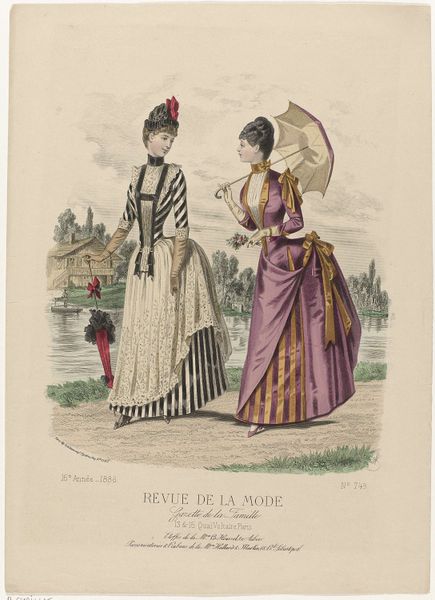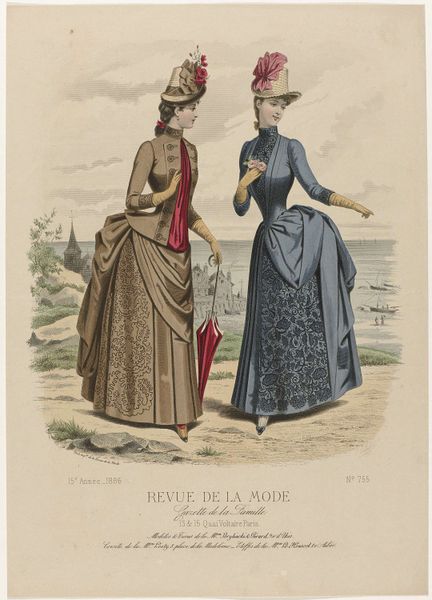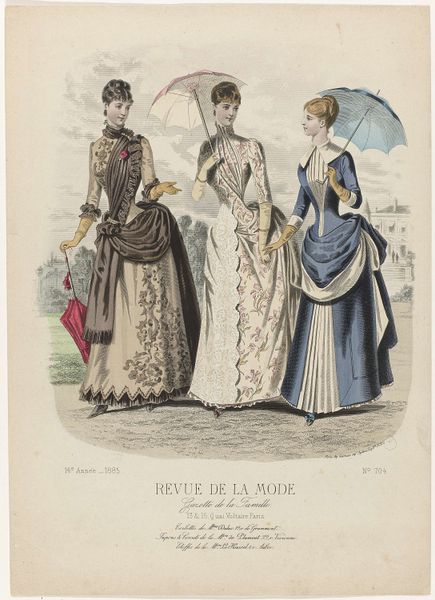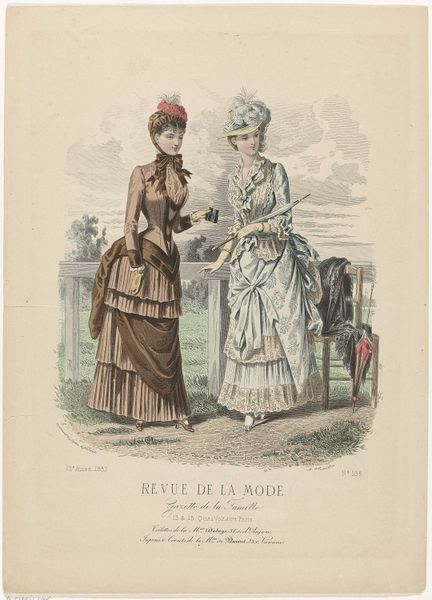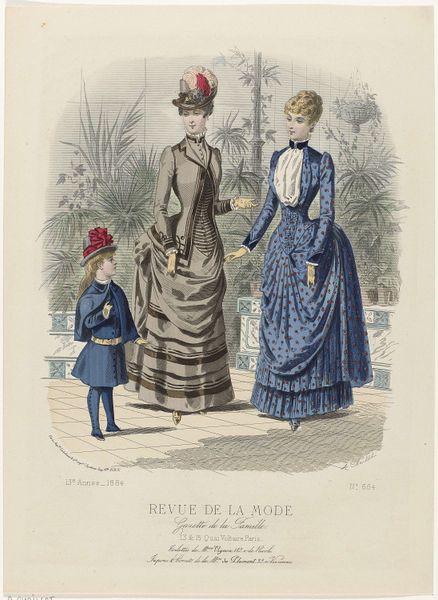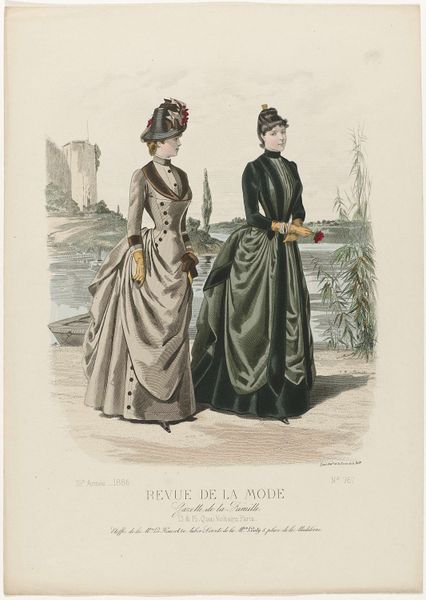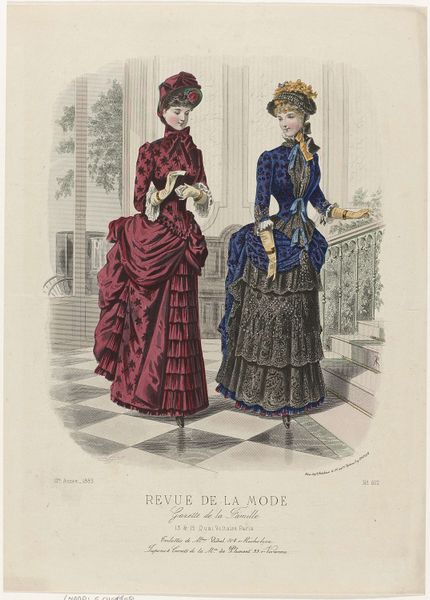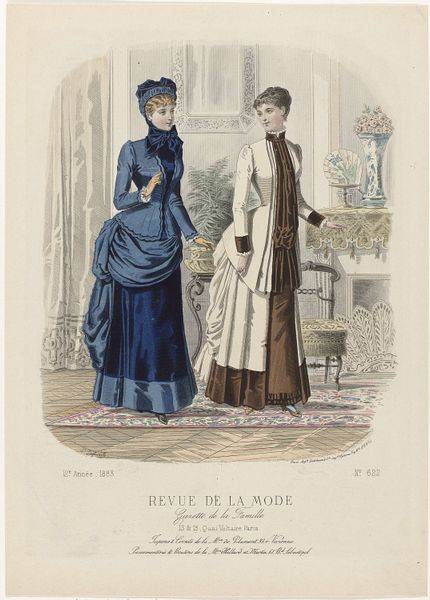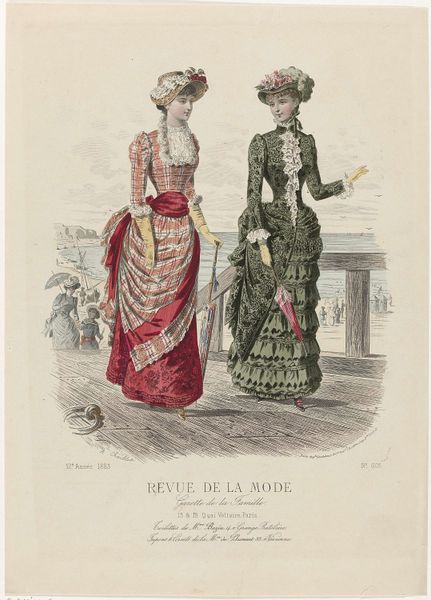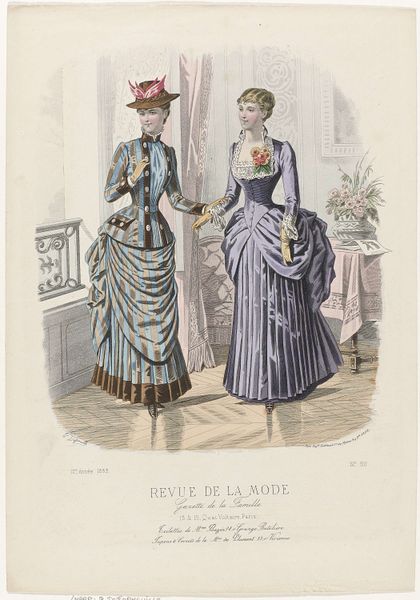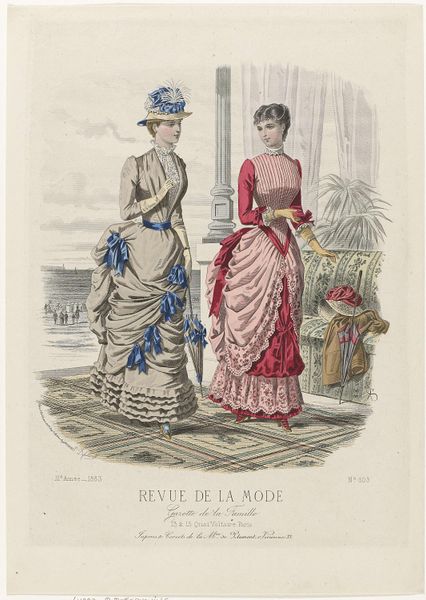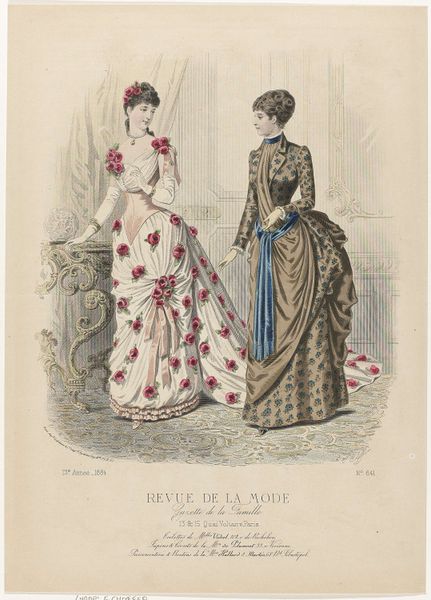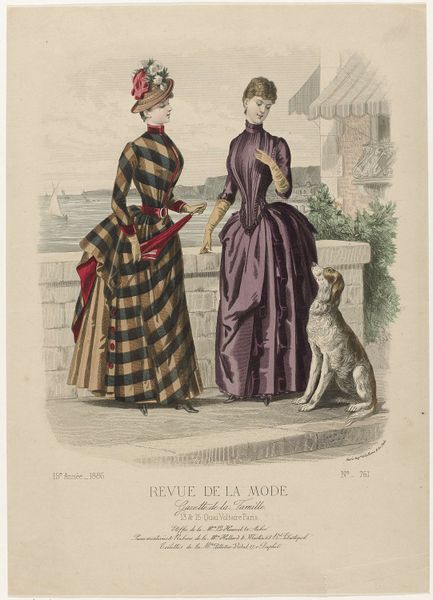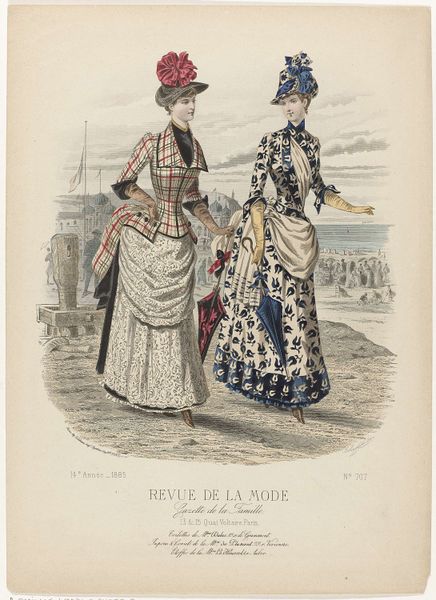
Revue de la Mode, Gazette de la Famille, dimanche 13 juillet 1884, 13e Année, No. 654: Toilettes de M.elles Vidal (...) 1884
0:00
0:00
Dimensions: height 375 mm, width 268 mm
Copyright: Rijks Museum: Open Domain
Curator: Editor: Let's dive into "Revue de la Mode," an 1884 watercolor illustration by A. Chaillot. The detail in these dresses is just incredible, and the presence of the dog adds such a charming, domestic touch. What do you make of it? Curator: Well, immediately, I see more than just a pretty fashion plate. Consider the context: this is the late 19th century, a period of intense social and political change. Fashion wasn't just about aesthetics, it was deeply intertwined with societal expectations, class, and the burgeoning women's rights movement. Editor: So, you're saying the way they dress is making a statement? Curator: Precisely. Look at the constriction of the waists, the layers upon layers of fabric. How do these elements reflect or perhaps even subtly resist, the limited roles available to women at the time? This image can open up important conversations. Editor: I hadn't really thought about it that way. I was focused on the romantic feel of the illustration, with its soft colors and delicate lines. The presence of the dog seemed purely decorative. Curator: Dogs often symbolized fidelity and domesticity during this era. But is there a power dynamic at play here too? Who holds the leash, metaphorically speaking? This seemingly innocuous detail could also offer a commentary on female agency within marriage and society. Editor: That’s a fascinating perspective. So even a seemingly straightforward image like this can be read on multiple levels? Curator: Absolutely. This is where art history meets contemporary theory. By analyzing the visual elements through a lens of gender, class, and power, we uncover the complex narratives embedded within. What else strikes you now? Editor: I'm realizing that fashion plates, like this one, weren't just about showing the latest styles, they were reflecting and shaping societal norms. It's like a little window into the past. Curator: Exactly! And by questioning what we see, we challenge the narratives we inherit. It is crucial to continuously inspect the cultural assumptions embedded within these visuals, isn't it?
Comments
No comments
Be the first to comment and join the conversation on the ultimate creative platform.
